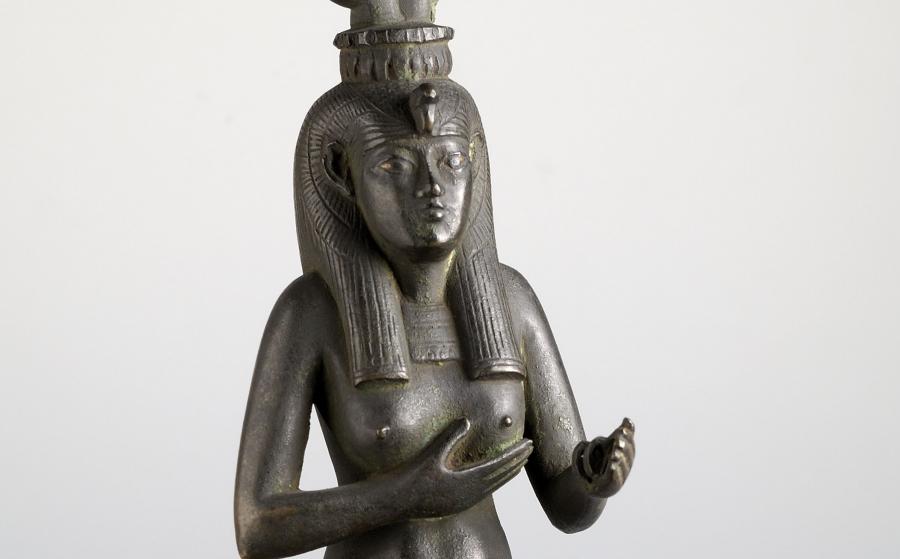Isis-Hathor
Information sur l’artiste
Égypte

Isis-Hathor allaitant Horus, Époque saïte.
Image © Lyon MBA - Photo Alain Basset
Isis, wife and sister of Osiris, was highly venerated by the ancient Egyptians due to her position as the mother of Horus. The child inherited the royal legacy through his mother’s milk, which led to Isis being associated with the cow goddess Hathor, the quintessential divine wet-nurse, in a subsequent era. This statuette of Isis lactans is a beautiful example of the artistic revival that took place during the Saite period.
Horus, who would originally have been seated on the goddess's lap, has been lost, but his mother's pose is unmistakeable: she is proffering her breast to the child whilst supporting his head with the other hand. Beneath a Hathoric crown – a solar disc held between two cow's horns – Isis is wearing a long wig covered with a vulture headdress decorated with a frontal cobra. Minute traces indicate that her eyes would have been inlaid with gold. She is wearing a long, close-fitting dress and a large Usekh collar. Her feet are resting on a base which bears a symbolic inscription in hieroglyphs: Isis gives life to Bik, son of Amenirdis.
Saite period, 26th Dynasty, circa 650-525 B.C.
Bronze
H. 32.1; W. 8.5; D. 14.3 cm
Acquired in 1810
Inv. H 1536





